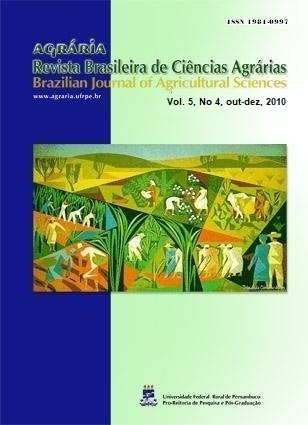Relationship between nematode communities and the physicochemical attributes of the soil in areas degraded by laminar erosion
DOI:
https://doi.org/10.5039/agraria.v5i4a641Keywords:
Biomonitoring, erosion process, soil quality, reservoirAbstract
The relationship between nematodes trophic diversity and the physicochemical attributes of soils in areas presenting initial, intermediate or severe erosive processes, close to the reservoir edge of Luiz Gonzaga Hydroelectric Plant, in the sate of Pernambuco, Brazil, were evaluated. Nematodes were identified and classified into throfic group. The non plant parasitic nematodes were identified by family, and the plant parasites by family and genus. The abundance and dominance of each group were estimated and correlated with the physicochemical attributes of the soil. Sites in initial erosive processes showed higher density of bacterial-feeding nematodes (Rhabditidae and Cephalobidae) with relative abundance of 37%, especially Cephalobidae (27%). The omnivores, particularly Dorilaymidae, were more abundant in areas with intermediary and severe erosion process, 40 and 48%, respectively. Sites in intermediary erosion processes presented weak correlations between nematodes and the physicochemical attributes of the soil. In contrast, sites in initial and severe erosion process showed stronger correlations, standing out the correlation of natural clay with Helicotylenchus, and aluminum saturation with Mononchidae, Aphelenchidae and Trichodorus.



